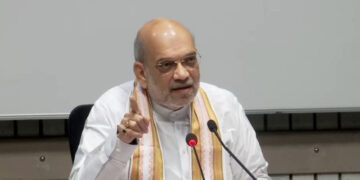Mumbai: The wind patterns in high altitude and very dry soil conditions caused back-to-back heatwaves in India in 2022, says a study by Indian Institute of Technology Bombay (IITB).
A new study by researchers at IITB and Johannes Gutenberg-University Mainz, Germany, have found that these unusually intense heatwave events in March and April of 2022, which saw temperatures far exceeding typical ranges for that time of year, were driven by different atmospheric processes that compounded heatwave impacts.
“Our analysis shows that the March heatwave was primarily linked to a sudden increase in the amplitude of short-lived atmospheric Rossby waves, which are large-scale meanders in high-altitude winds resembling bends in a winding river,” the study’s lead author Roshan Jha said.
The waves grew stronger as high-altitude westerly winds near the poles transferred energy to westerly winds closer to the equator as they came closer during the heatwave, he said.
However, the April heatwave was largely caused by very dry soil conditions and advection of heat to India from north-western land regions of Pakistan and Afghanistan.
These dry conditions were partly created by the earlier March heatwave, which had already dried out the land through high temperatures and clear skies, the study added.
When soil has moisture, under clear sky conditions, some of the sun’s energy goes into evaporating that moisture rather than heating the air, explained Arpita Mondal, Associate Professor at IIT Bombay and a co-author of the study.
But when the soil is already dry, all that energy goes straight into making the air hotter, she added.
“Understanding these mechanisms is crucial for improving our ability to forecast and prepare for extreme heat events in South Asia. As climate change continues to affect atmospheric wind patterns, identifying these specific drivers helps us better predict and mitigate the impacts of future heatwaves,” Mondal, Convener of Centre for Climate Studies and Professor at Department of Civil Engineering, IIT Bombay, said.






